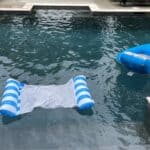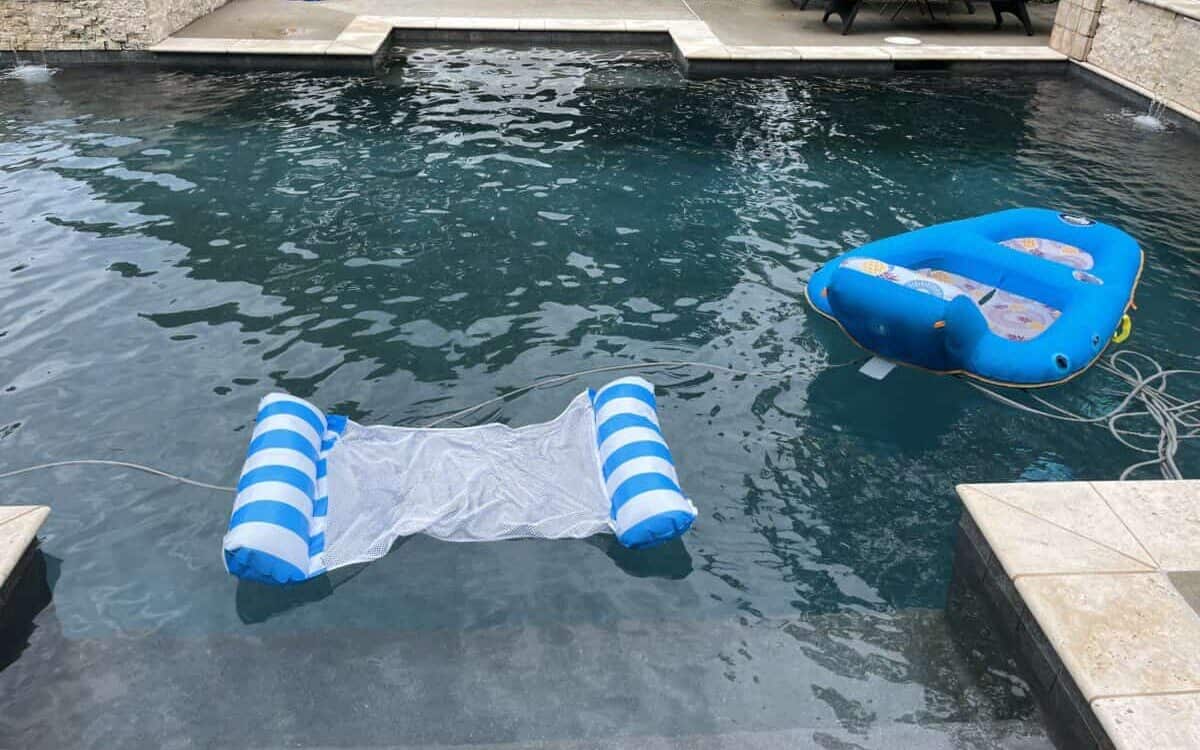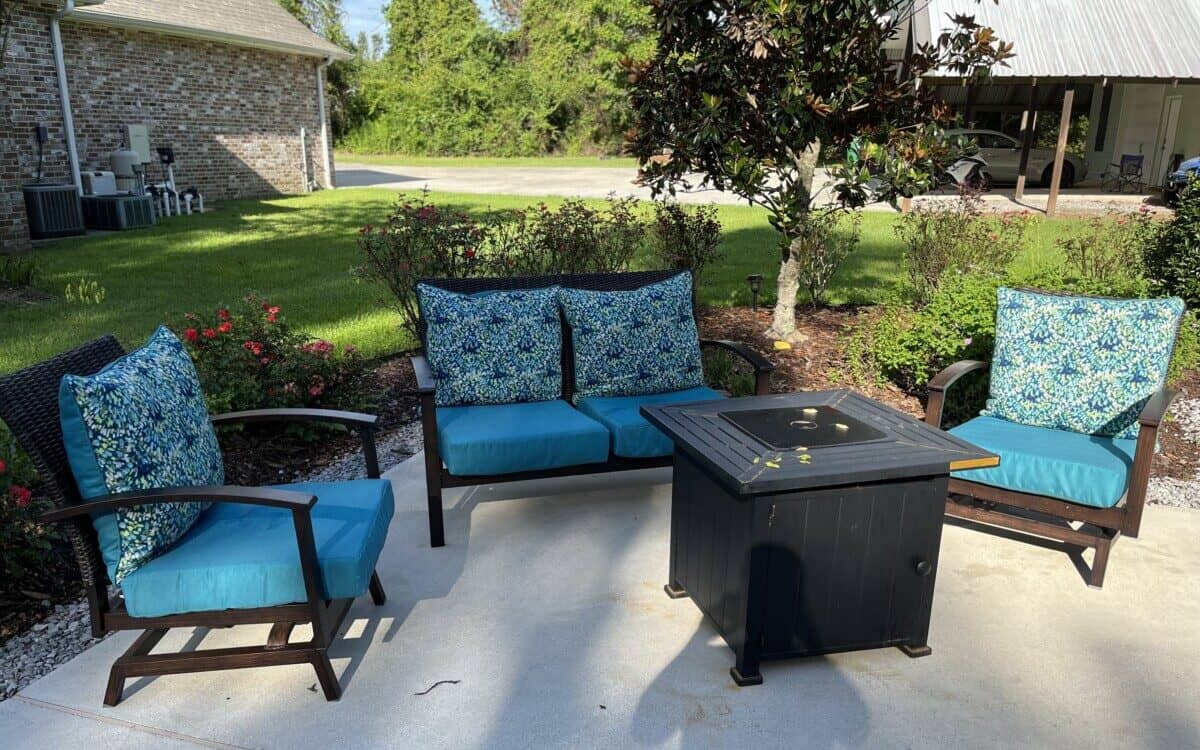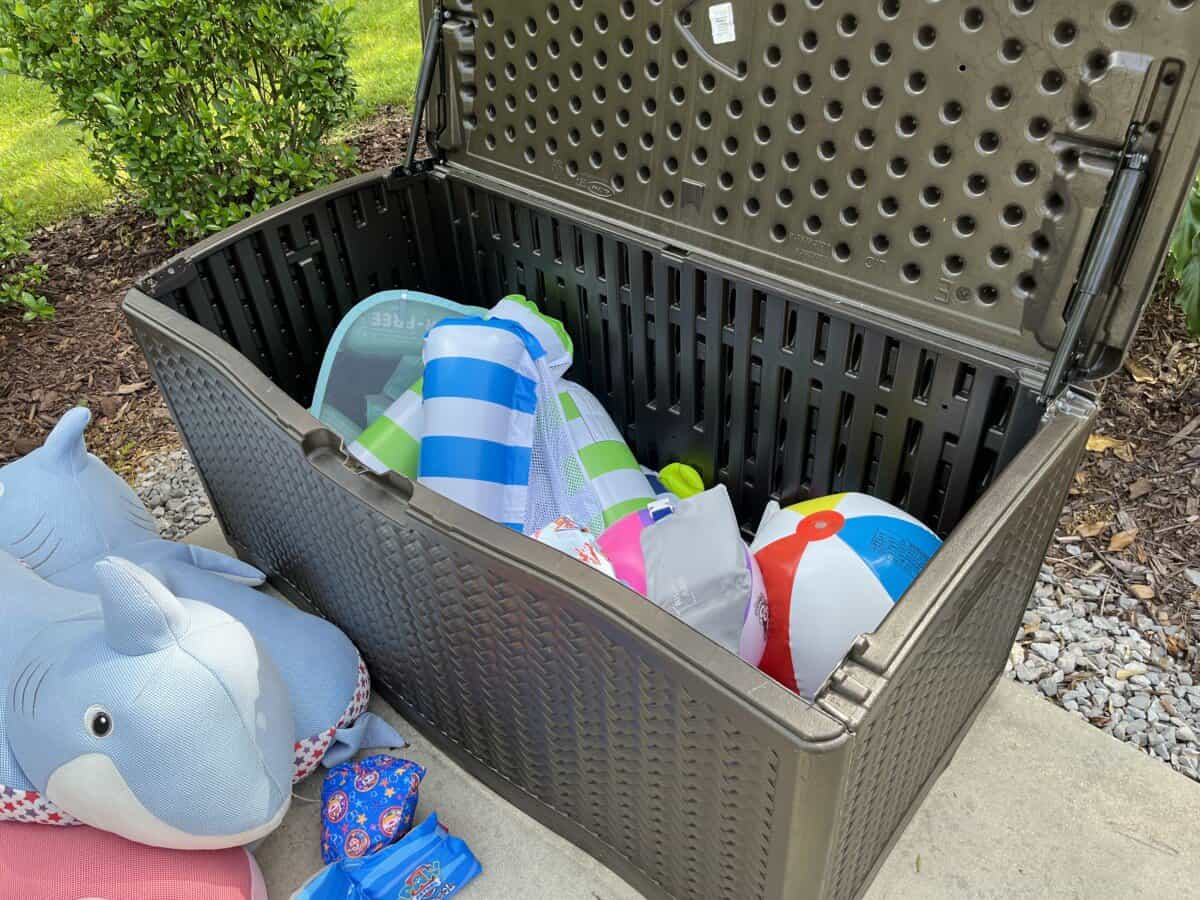If you have a pool, you know that chlorine is essential for keeping the water clean and safe. But how often should you add chlorine to your pool?
In general, you should add chlorine to your pool once a week. But it can vary a lot based on a few factors, including the size of your pool, the weather, and how often it’s used. Of course, the best way to determine how often to add chlorine to your pool is to test the water regularly.
Adding chlorine to your swimming pool is an important part of keeping it clean and safe for swimming. However, you may not know how often you should add chlorine to your pool in order to ensure that it remains clean. In this blog post, we discuss how often you should add chlorine to your pool and provide some tips on maintaining a clean swimming environment.
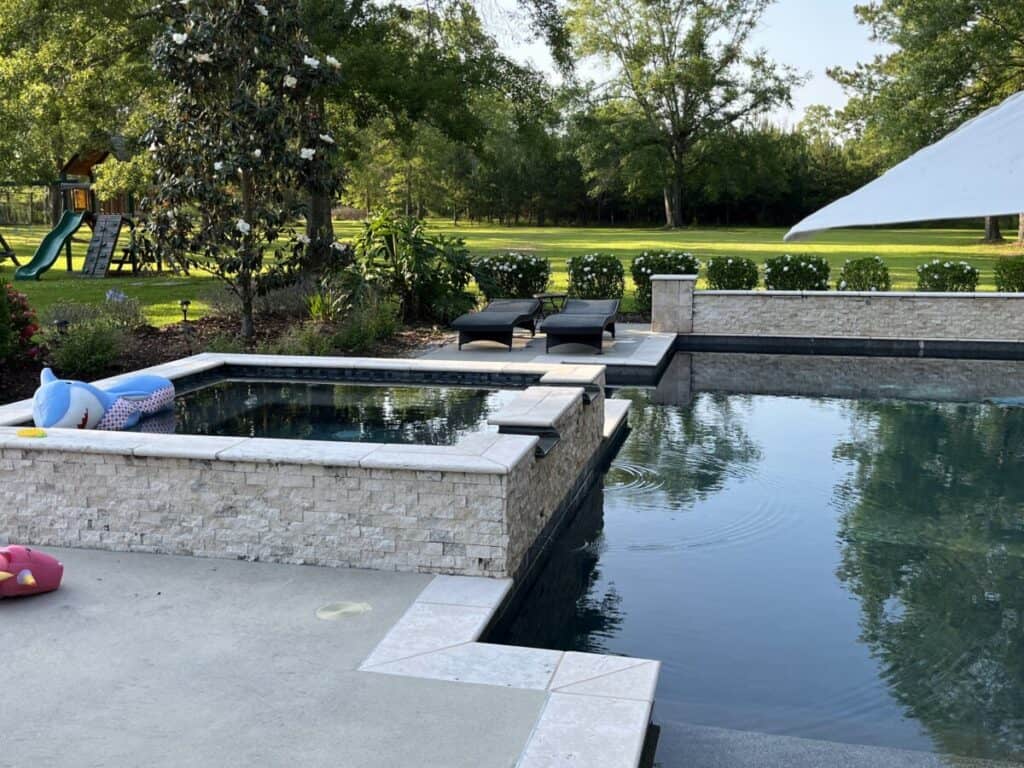
How often do you add chlorine to a pool?
Chlorine is added to pools on a regular basis to help keep the water clean and free of bacteria. In general, chlorine should be added to a pool on a weekly basis. However, if the pool is being used more heavily, or if the weather is hot and sunny, chlorine may need to be added more often.
Conversely, if the pool is not being used much, or if the weather is cool and cloudy, chlorine can be added less frequently. Ultimately, chlorine should be added to a pool as needed to maintain a safe and healthy environment for swimming.
I typically add about one gallon of liquid or granular chlorine for every 10,000 gallons of pool water every two weeks. In addition, I put two 3-inch chlorine tabs (trichlor chlorine tablets), in my pool’s skimmers weekly.
However, this may not work for you because the exact quantity of chlorine you need to add to your pool depends on many factors. Such as the type of chlorine you’re using, your pool’s size, and also your pool water’s chemistry.
Most manufacturers of chlorine products will mention exactly how much chlorine to add to your pool. However, in addition to following those instructions, you must test your water using a chlorine water test kit. This will give you the exact measure of free chlorine already in the pool. Ideally, the free available chlorine should be between 1-2 pp,
A pool with too much free chlorine in it certainly does not need anymore. Remember: water chemistry can change rapidly, so you may want to test repeatedly to know the exact values.
However, if you have an algae problem, then it is an indication that your pool needs more chlorine. So, you may need to shock your pool weekly or once every 2 weeks to counter it.

The 6 best chlorine tabs for pools
In The Swim, 3 Inch Stabilized Chlorine Tablets for Sanitizing Swimming Pools
These are the leading chlorine tabs in the industry and are recommended by professional swimming pool maintenance companies.
Each tablet is 3-inches in diameter and weighs 8 ounces. It is also individually wrapped. The tablet dissolves slowly and has a long-lasting sanitizing power. It provides 90% available chlorine to keep your pool sanitized.
Moreover, the In The Swim tablets are the perfect size for automatic chlorinators/feeders.
Pros
- Easy to use
- Slow dissolving and long-lasting
- Compatible with salt water pools
- Eliminates bacteria and algae
- UV resistant
- Individually wrapped
Cons
- Sometimes, the tablets disintegrate in their wrappers.

Clorox Pool & Spa XtraBlue 3″ Long Lasting Chlorinating Tablets
Many features make the Clorox chlorine tabs one of the best-rated tabs in the market.
Firstly, this is a reliable brand that you can count on. All their products have always lived up to the standards.
Secondly, these tabs eliminate green, mustard, and black algae. They are also protected against sunlight, so chlorine availability in the pool lasts longer.
Finally, these tabs won’t cause corrosion, scale, and stains in the pool.
Pros
- It kills bacteria and algae
- Long-lasting sun-protection
- It comes with a free app for water testing
- Easy to use
- Long-lasting
- Value for money
Cons
- Not individually wrapped. People with breathing issues/COPD need to be careful while handling them.

Leslie’s Jumbo 3 Inch Chlorine Tablets for Sanitizing Swimming Pools
The best feature of Leslie’s chlorine tabs is that it is devoid of glues, fillers, and binders. Each tablet is also individually wrapped and dissolves slowly to provide almost 90% of available chlorine.
Leslie chlorine tabs are also stabilized to prevent burning off in the sun.
Pros
- Built-in UV inhibitor
- Long-lasting sanitization
- Individually wrapped
- It kills black, mustard, and green pool algae
- 90% available chlorine
- Free from fillers, glue, and binders
- Easy to open bucket.
Cons
- Not consistent quality- some users reported chlorine levels would not go up despite use.

Robelle1420M 5-in-1 Chlorine Tabs Pool Sanitizer
Robelle chlorine tabs perform 5 jobs: they sanitize, clarify, de-scale, control algae, and even inhibit stains. This reduces the need for other chemicals.
Pros
- Slow-dissolving, sun-stabilized
- It can be used in automatic chlorinators, feeders, and floaters
- Sanitizes, disinfects, inhibits stains, de-scales, controls algae
- Value for money
- Easy to use
- Individually wrapped
Cons
- Dissolves quickly.

Doheny’s 3-Inch Swimming Pool Chlorine Tablets
Doheny’s have been chlorine perfectionists for over 5 decades!
These tablets dissolve slowly, last longer, and are even stabilized to withstand the sun’s rays.
Pros
- Easy to use
- Individually wrapped
- Long-lasting; sun-stabilized
Cons
- Some tablets crumbled into a powder.

POOLWELL 3-Inch Pool & SPA Chlorine Tablets
Poolwell’s multi-purpose chlorine tablets not only kill bacteria and algae but also de-scale and inhibit stains. Your pool will be silky smooth and clear with every use. Furthermore, it can be used for treating spas, hot tubs, and even in toilets!
Each individually wrapped tablet provides 90% available chlorine, and 1 tablet easily treats 10000 gallons of water for a week.
Pros
- It prevents corrosion, scaling, stains, algae, and bacteria
- Stabilizes and protects pool water
- Sun-light protected for long-lasting sanitation
- Individually wrapped
- Multi-purpose
- Affordable
Cons
- No clarity about the number of tablets in each bucket.
Factors that affect the frequency you add chlorine to your pool.
CYA (CyanUric acid) stabilizer and free chlorine levels
It is recommended that you test your pool water daily – at least in the summer months. You need to test the CYA levels as well as the free chlorine level.
CYA stands for CyanUric acid – this is the stabilizer added to prevent chlorine loss. The chlorine level should be a minimum of 7.5% of the CYA. Remember that CYA stabilizes the chlorine but also reduces chlorine’s effectiveness. This is why chlorine needs to be 7.5% of the CYA.
I recommend the Taylor K 2006 complete test kit. (You could use other DPD or OTO reagent-based water test kits, test strips, or digital testing products available online and offline.)
Next, add chlorine to bring the level to 7.5 to 10% of CYA. Keep testing the water because you must maintain this level constantly.
Balance with other pool chemicals/water parameters
The level of other pool chemicals and water parameters also play a role in deciding the chlorine requirement:
- Stabilizer/conditioner – Stabilizer protects chlorine from getting destroyed by the sun’s rays. Ideally, this should be between 40-100 ppm. This level reduces chlorine demand and extends the disinfectant time.
- pH – Ideally, pH should be 7.2 to 7.4. This may not have a direct bearing on chlorine but it impacts swimmer comfort, equipment lifespan, and even the pool’s finish.
- Total alkalinity – this should be between 70-140 ppm. It goes hand-in-hand with the pH.
- Calcium hardness – is important for maintaining plaster and preventing scale buildup on the pool’s surface.
The ambient temperature
On very hot days, you might want to over-chlorinate slightly. That way, when the sun comes up and evaporates most of the added chlorine, you’d still have the available chlorine at acceptable levels. A pool in the dry climate of Arizona would need more chlorine tabs than that required by a similarly-sized pool in a cooler state. (I will discuss Chlorine tabs in the next section)
Pool usage
If you use the pool heavily – have pool parties frequently, or have dogs tracking grass and mud in the pool, then you might want to increase the use of chlorine tabs accordingly. (Always test the chlorine levels first).
Rain
If your pool is exposed to heavy rainfall, the rainwater will dilute the chlorine. It is recommended to use more chlorine after heavy rain. (Always test the chlorine levels first).
Whether you use a chlorinator
How much chlorine you add and how often also depends on how much chlorine your chlorinator takes. Some varieties of in-line chlorinators can be filled up completely, and you need not add any tabs or liquid for up to a month. This is because chlorine only comes into the water once the pump is running. (It is still recommended that you test the water regularly in such a case).
The chlorine product and the filter you use
Many non-sand filters do not require you to change your pool water. In such a case, you need to note how much stabilizer is present in the chlorine product. Remember, at ideal levels, chlorine stabilizers prevent the chlorine from breaking down. This is great, but at higher levels, you cannot add enough chlorine to sanitize the pool.
When you first open the pool in season, you might add the opening pack, which has a stabilizer in it. After a month or two, if algae blooms occur in the pool, you need to shock the pool by adding more chlorine. The chlorine will again have a stabilizer.
In such an event, if you continue using shock with a stabilizer, it could easily overload your pool’s filtration system. (I will discuss pool shock in the coming section.)
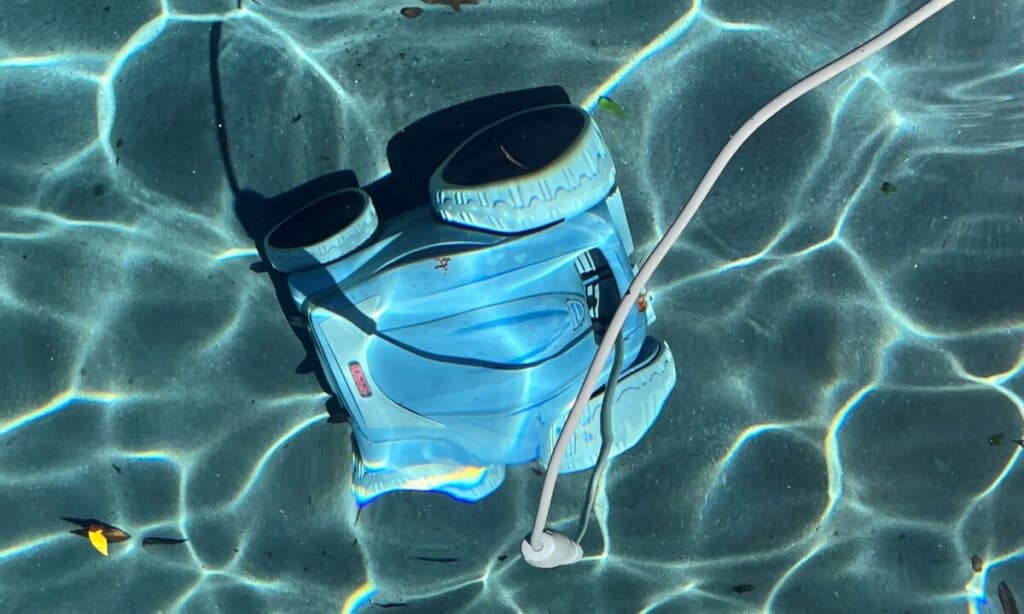
Why is chlorine an essential part of pool maintenance?
According to the experts at Chemical Safety Facts, chlorination is an essential part of swimming pool maintenance because of the following reasons:
- The CDC recommends it: According to the Center for Disease Control, pH balance and chlorine in swimming pools are extremely important for preventing germs that can cause water-borne diseases in humans.
- It sanitizes and kills germs to prevent dangerous infections in swimmers – Chlorine is a proven defense against e.coli and salmonella bacteria. It combines with hydrogen and oxygen molecules of water to produce a weak hypochlorous acid that eliminates these dangerous bacteria that are often responsible for infections like swimmer’s ears and dysentery.
- It prevents algae – Algae in swimming pools tends to increase rapidly if you do not add chlorine regularly. Algae not only harm humans; they also clog your pool’s filtration system and lower the efficiency of other pool chemicals. They also render your pool dirty green in color.
- It stabilizes the pool chemistry – Chlorine is essential to your pool’s chemical balance. It stabilizes the pool water to maintain consistent pool quality. Chlorine forms oxides in the pool that help maintain your water’s clarity and silky smoothness.
Pro Tip: To reduce the time it takes to clean your pool and help disperse chlorine, invest in a robotic pool cleaner.
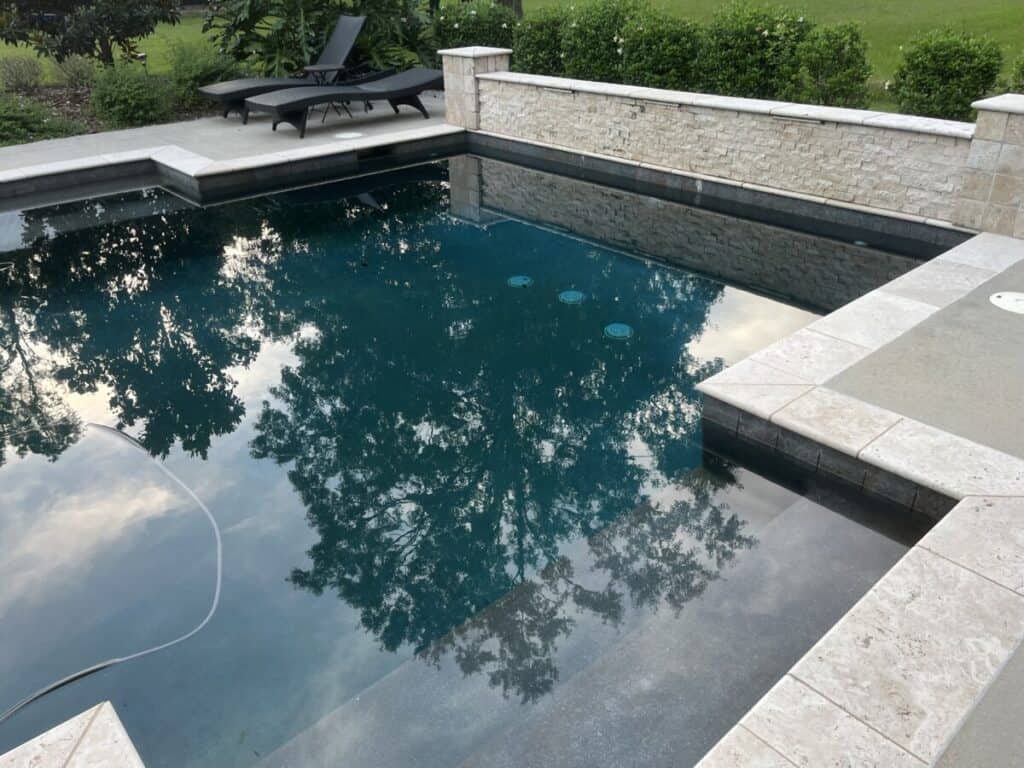
How long does chlorine last in a pool?
Chlorine without chlorine stabilizers is easily destroyed by the UV rays of the sun within a few hours. Exposure to the sun also causes rapid evaporation of the pool water and, along with it, the chlorine molecules.
If you’re like me and live in an area with heavy rainfall, then your chlorine will rapidly dilute. Also, chlorine’s availability will decrease with heavy usage of the pool.
That is why you need to repeatedly treat your pool with products having chlorine stabilizers to ensure that it remains in the pool for several weeks. In addition, I typically keep granulated shock on hand, so my pool doesn’t get out of control.
Is pool shock the same as chlorine tabs?
Pool shock and chlorine tabs are not the same because they differ in the levels of chlorine intensity and also the methods of application.
Pool shock is the use of chlorine in a very high dose. It literally means ‘shocking’ your pool with the high chlorine dosage. Ideally, you should shock your pool once a week (but only after testing parameters) and whenever your pool is looking cloudy, green, or develops algae blooms.
On the other hand, chlorine tabs can be added to the pool’s skimmer basket or a chlorinator once a week for 10000-gallon pools. This helps maintain constant levels of residual or available chlorine in the pool.
You should ideally use shock and tabs together as they have a complimentary action. Without tabs, the chlorine will dissipate quickly out of the water, and without shock, the level of chlorine will not be high enough to disinfect and sanitize bacteria and algae from the water.
Conclusion – How Often To Add Chlorine to My Pool?
How often to add chlorine to the pool depends on several factors like your pool’s existing chemical levels, ambient temperature, rainfall, sunlight, the use of stabilizers, the kind of filter you have, and the chlorine products you use.
Most pools benefit from weekly chlorine tabs added to the floater along with regular chlorine shocks to counter algae bloom. We hope this guide helps you determine the right chlorine usage for your pool.
Below is a YouTube video that explains when to add chlorine.


